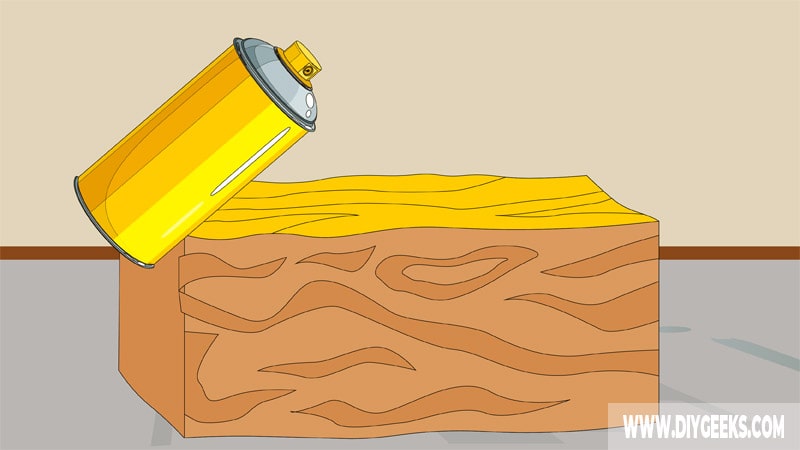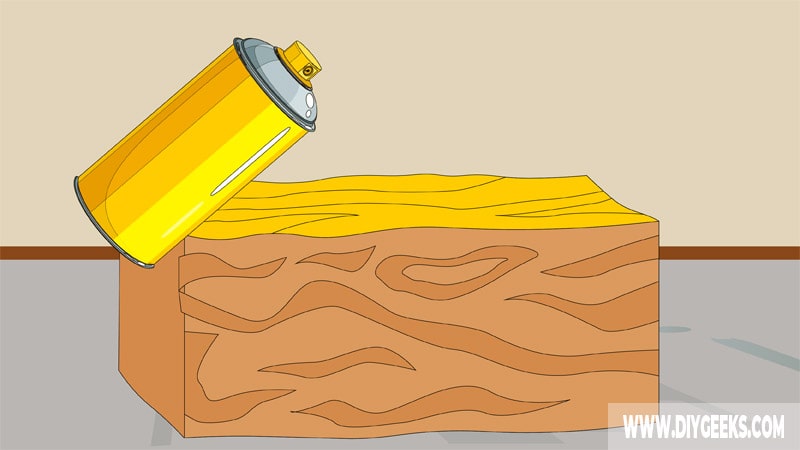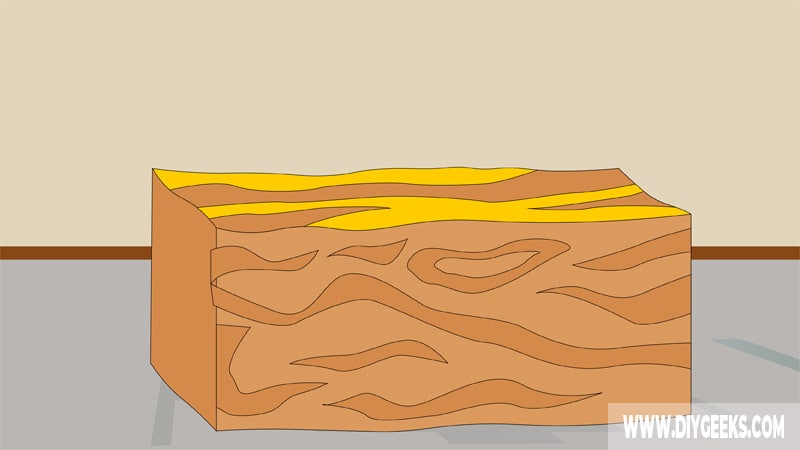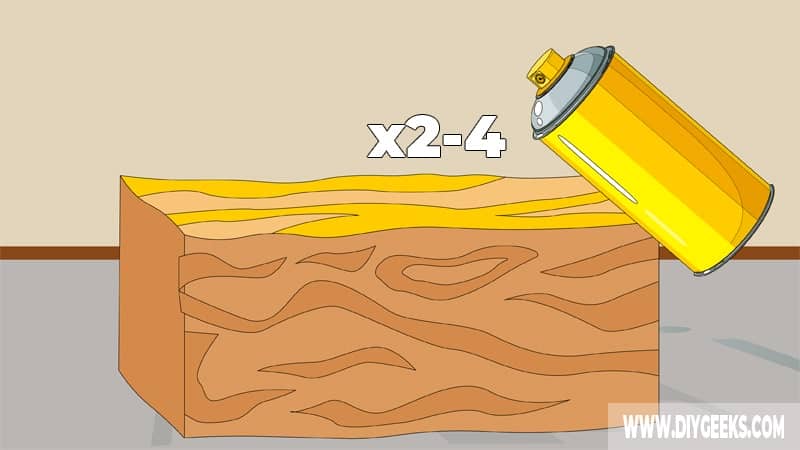For proper coverage and protection, you need between 2-4 spray paint coats. However, the number of coats depends on the paint type, surface type, and thickness of the coats.
The minimum number of coats for spray paint is two (2), while the maximum is five (5). Less or more than this and the finish won’t protect the surface or will turn sticky.
Why Does The Number of Spray Paint Coats Matter?
The number of spray paint coats matters as it determines the finish quality, drying time, color shade, and level of protection (durability).
The finish will take longer to dry if you apply multiple thick coats. For each extra coat you apply after the third one, the coating will take 2 more hours to dry.
The color shade is also determined by the number of coats. The finish will have a darker color shade if you apply more spray paint coats. That’s because the more coats, the more paint pigments (or colorants) are on the surface. The increased level of pigments will deepen the finish color.
The number of coats also affects the level of protection the finish provides. For instance, rust-oleum spray paint is designed to protect the metal from rust, but you must apply the right number of coats to get rust protection.
If you apply less than the required, the finish won’t protect the metal. On the other hand, if you use more than the needed coats, the finish turns sticky.
When To Apply an Extra Spray Paint Coat?

Apply an extra spray paint coat if the finish looks lighter than you wanted or if you notice bleed-through from the previous coats.
For instance, if you want a green finish but the existing finish has a light-green color shade, apply another extra coat to deepen the color shade. For every coat you apply, the color of the finish gets deeper.
Apply another extra coat if the existing coating (or finish) is bleeding through. An extra coat will seal and cover the previous finish and prevent bleed-through.
You can also check the manufacturer’s instructions on the spray paint bottle to know if you need another coat. Manufacturers often include the number of coats needed for different surfaces.
What’s The Maximum Number of Spray Paint Coats?

The maximum number of spray paint coats is five (5). More than 5 coats and the finish will get ruined as it can’t penetrate (soak) into surfaces and will turn sticky. To get a good finish, you only need 3 to 4 thin coats of spray paint.
For instance, if you apply too many coats on a vertical surface (such as walls or fences), the paint will drip and run off the surface. Since there’s too much spray paint on the vertical surface but not enough space for it to stick, the coating will drip off and create a long sticky finish.
When the sticky finish dries, it will be riddled with lines, bumps, and blemishes, and might crack.
The finish will take longer to dry if you apply too many coats on a horizontal surface. When the spray paint turns sticky, the finish will attract filth.
The worst thing about having a bad finish is that you must fix it afterward. So, instead of enjoying it, you must spend extra hours whipping off the excess spray and sanding the finish. Sometimes, you must remove the entire finish and re-apply it. So, whatever you do, don’t over-apply it.
What’s The Minimum Number of Spray Paint Coats?

The minimum number of spray paint coats is two (2). Spray paint coating is thin and needs at least 2 coats for proper coverage and durability. One (1) coat isn’t enough to cover the surface and protect it. In most cases, four (4) coats are enough.
The finish will be weak, won’t protect the surface underneath, and you will get a lighter color shade finish if you don’t apply enough coats of spray paint. The finish will have a lighter color shade because there aren’t enough pigments on the surface.
A thin finish is easily dented and damaged and doesn’t protect a surface from water, moisture, scratches, or other damage. The existing (old) finish will also bleed through if you don’t apply enough coats.
How Long Does Spray Paint Take to Dry Between Coats?
Spray paint takes 1-4 hours to dry between coats. This gives each coat enough time to harden enough to support the next one.
Oil-based spray paint takes longer to dry as it uses oil as its solvent, and oils take longer to evaporate from a finish.
You must wait 2 hours after the third coat of spray paint. That’s because the more coats of apply, the longer it takes it to dry.
To know if the spray paint is dry enough for a re-coat, use the sandpaper method. Wipe ultra-fine sandpaper across the finish; if the sandpaper gets clogged, the finish isn’t dry enough. If the paint doesn’t get into the sandpaper and the finish looks textured, the finish is dry enough.
How Many Spray Paint Coats for Different Surfaces?
Metal
You need at least 2 coats of spray paint on the metal.
Metal surfaces need protection from air and moisture to prevent rust. If the metal surface isn’t coated with enough spray paint, it will be exposed to air and moisture, which causes rust.
However, if you use Rust-Oleum spray paint, you need only 1 coat of it. This spray paint is thick and formulated with chemicals and additives that protect the metal.
The number of coats for metal also depends on the condition of the metal surface. For instance, if the metal surface is defective and you want to cover the damaged spots, you need more coats to fully cover those spots. You can also check the manufacturer’s instructions to know for sure.
Plastic
You need 1-2 coats of spray paint on plastic surfaces.
You shouldn’t apply more than 2 coats because plastic isn’t porous, so the coating won’t stick properly. If you apply too many coats, the paint won’t stick and will drip off the surface. To help it stick to plastic, you must sand and prime the surface first.
Wood
You need 2 coats of spray paint on a wooden surface for a normal finish, and 3 coats for a deeper finish.
However, if the wood has an existing color that you want to cover, you must apply 3 coats to prevent bleed-through.
If the wood is primed or sanded, you don’t need too much of it because the finish can become too thick.
Furniture
You need 2 to 3 coats of spray paint on furniture surfaces.
You must apply more for high-traffic furniture to protect them from damage and scratches. However, for decorative furniture, you don’t need too many, 1 is enough.
On Car
You need 3-4 coats of spray paint on a car. You need more coats on cars because they see a lot of friction.
Frequent washing, stains, dust, UV rays, heat, rain, and dents can remove the spray paint from the car. So, you need enough of it to handle all of these without chipping prematurely.
However, you must only use automotive spray paint on cars, and you must apply primer first.


